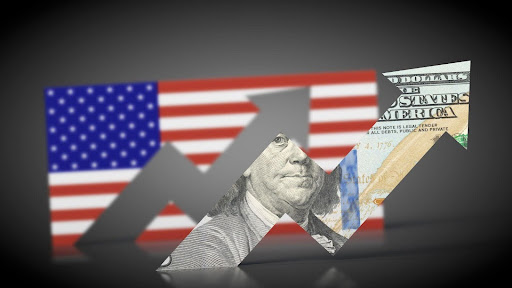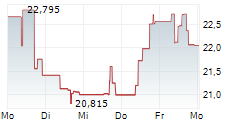Interest rates are a significant reason the U.S. dollar is holding firm: The Federal Reserve has signaled that it will begin lowering borrowing costs but is choosing to move slowly. That patience has a powerful effect; by keeping American interest rates higher than those in most other advanced economies, the Fed makes U.S. investments more appealing. As long as the pace of cuts is stable and deliberate, the dollar remains supported, even in times of uncertainty about growth and inflation.
Why Rate Cuts Matter for the Dollar
Interest rates are not just a technical detail for bond traders. They determine how much investors earn when they park in the United States compared to elsewhere. Currently, U.S. yields are still well above those in Europe and Japan. For example, a two-year Treasury note in the United States pays a return that far outpaces similar government bonds in Germany or Japan. That difference means investors receive more income when buying American bonds, so they must buy dollars.
The pace of rate cuts decides how long this advantage lasts: If the central bank trims slowly, the dollar stays appealing; if reductions are deeper or faster than expected, the yield gap shrinks, and the dollar can weaken. Presently, policymakers are sending a clear message that they prefer caution.
The Labor Market’s Role
The job market is a central piece of this puzzle. The central bank uses employment data to determine the amount of slack in the economy. If hiring slows sharply or unemployment rises, officials may feel pressure to cut rates more aggressively. If hiring stays steady, they can move at a measured pace.
Recent reports show job openings coming down from pandemic highs, while layoffs remain low. Inflation has cooled compared with 2022 but has not yet reached the two percent target that policymakers consider healthy.
Investors watch these reports closely, and softer employment numbers often lead to speculation that rate cuts will come sooner, which can temporarily weaken the dollar. More substantial numbers push expectations of cuts further out, helping the dollar hold steady.
Investor Watchdogs
Market watchers do not simply read headlines. They track every move in real time, often with sophisticated platforms. One widely used resource is TradingView, which provides interactive charts that show the relationship between bond yields and currency values.
The story on these screens has been consistent. Whenever rate cuts look far off, the dollar edges higher. When cuts seem closer, the dollar drifts lower. Yet over the past several months, the broader picture has favored the U.S. currency. The decision to delay deeper cuts has allowed the dollar to maintain its position.
Global Ripples
The strength of the dollar is not just a story for financial markets. It shapes daily life in ways that most people do not always notice. Families, businesses, and investors all experience the effects in different ways.
* Travel costs abroad: A strong dollar makes hotel stays, meals, and shopping in Europe or Asia cheaper for American tourists.
* Imported consumer goods: Electronics, cars, and other products from overseas often cost less when the dollar is strong since importers can pay foreign suppliers with fewer dollars.
* Local businesses that export: Companies that sell products abroad may find their goods more expensive to foreign buyers, which can pressure sales.
* Investment portfolios: Investors with international holdings see the value of those assets fluctuate when the dollar rises or falls, affecting retirement accounts and brokerage balances.
These impacts are tangible for a community like Moorpark, which is known for its high quality of life and robust household incomes. Families planning overseas vacations, residents buying imported vehicles, and local businesses engaged in trade all feel the consequences of a dollar that refuses to weaken.
Imports and Consumer Spending
A strong dollar is often seen as a win for consumers because imported products become more affordable, which can help stretch household budgets. Retailers pass on some savings from favorable exchange rates, so shoppers see lower prices than they might otherwise face.
Cheaper imports also subtly affect inflation; if the dollar is strong, imported goods cost less, which helps keep overall consumer price growth in check. For the central bank, that makes controlling inflation easier, reinforcing the case for a patient approach to cutting rates.
Exports and Business Challenges
On the other side of the equation, exporters often find the strong dollar more difficult. Agricultural producers, manufacturers, and technology firms that sell abroad see their goods become relatively more expensive. A European customer who once found U.S. products affordable may think twice when exchange rates make the same product costlier in euros.
This dynamic can weigh on growth if it persists for too long. However, for now, strong domestic demand and the labor market’s resilience have kept the U.S. economy on a steady path.
Risks on the Horizon
The dollar’s strength is not guaranteed. In 2008, the global financial crisis forced emergency rate cuts that altered currency markets dramatically. In 2015, diverging policies between the Fed and the European Central Bank sent the dollar soaring.
Today’s risks are different but just as real: The central bank could accelerate cuts if inflation falls more quickly than expected. If growth weakens sharply, officials may feel pressure to move more aggressively. If other economies rebound faster, investors could shift their money abroad. Each of these scenarios would challenge the dollar’s elevated position.
Interest Rates’ Approach Drives Dollar Stability
The U.S. dollar’s strength rests on the monetary authorities’ measured approach to cutting interest rates. By holding back from aggressive moves, they keep U.S. returns higher than most alternatives, ensuring steady demand for the currency. For households, that means cheaper imports and stronger buying power abroad. For investors, it confirms that caution in policy still shapes the dollar’s global role. The future path of the greenback will depend on the balance between growth, inflation, and the pace of policy decisions, but for now, a firm dollar remains the headline story.







